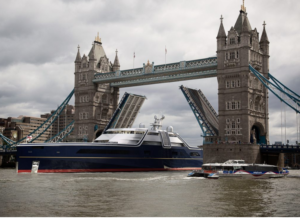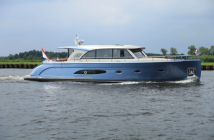The British royal family has gotten a lot of attention in the U.S. and the English-speaking world lately, with millions of us glued to our screens to watch Queen Elizabeth’s funeral and all five seasons of The Crown on Netflix (2.8 million people watched just one episode last November in the UK alone). More recently, Prince Harry’s tell-almost-all biography Spare sold 1.43 million copies in the U.S., Canada and Britain on the first day it was available.
Now, we can get a new look at the lives of the royals – almost. One of the most poignant episodes of The Crown was when Queen Elizabeth reluctantly agreed to sell the Royal Yacht Britannia as an austerity measure, in 1997. It had been launched in 1954, and she said it was her favorite spot in the world.
The royal yacht has a special place in history. Indeed, the royal family has had one since King Charles ll in 1660. So there was great interest in the spring of 2021 when then-Prime Minister Boris Johnson announced plans for a new national flagship as a successor to the Royal Yacht Britannia to promote British trade and industry around the world. He said there would be a competition among leading yacht designers to get the government’s approval for the yacht.
Unfortunately, a new government scuttled those plans last October, also as an austerity measure. But last week, Vitruvius Yachts, the London-based firm, revealed its plans for the yacht, saying it had been a finalist in the competition before it was cancelled.

The design, a collaboration among Philippe Briand and Vitruvius Yachts, Zaha Hadid Architects, and Ocea, an aluminum ship specialist, called for a 250 million pound (307 million U.S. dollars), 410-foot, zero-carbon superyacht with an aluminum hull and green technology (recognizing King Charles lll’s interest in the environment) inside and out.
Vitruvius said the yacht was “a vessel for the people” but it was “designed to be ‘fit for a king.’”
The hull would have 30 percent less hydrodynamic drag than a conventional steel ship, and power would come from a large battery bank that could be charged on shore or by onboard generators using renewable biofuels. It would be built with recycled aluminum, with the interior based on recycled or recyclable materials.
The interior also would have a flexible plan, so it could be used as a floating embassy or exhibition area. The exterior uses the Union Jack flag as a motif; an LED-lighted line in the profile hints at the ribbon pattern in that flag. Read more at http://vitruviousyachts.com and see the video below:




